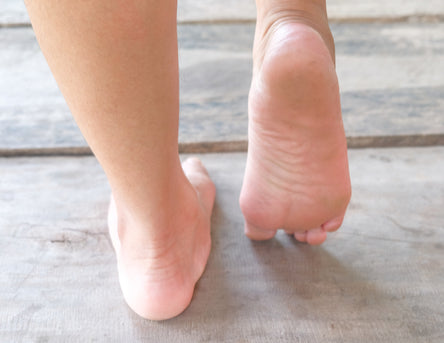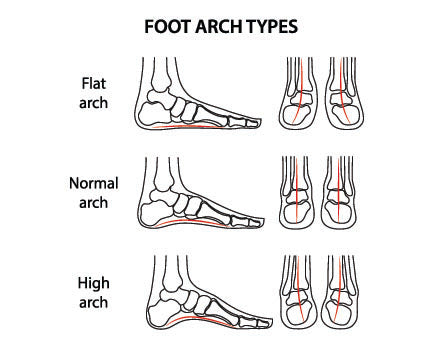Fallen Arches
Fallen Arches Cause Excessive Pronation
There are many people who have arches which collapse and fall at some point throughout their life. When arches fall then overpronation usually occurs while walking or running.
Fallen arches can be a painless condition, however, when your feet lose the structure of their arch it alters the alignment of your legs and can cause misalignment throughout your body. The misalignment can cause discomfort and pain which can affect not only your feet but also your ankle, calf, knee, leg, and back because of the extra strain caused.

If you are suffering from fallen arches, insoles could have a very drastic effect in helping to realign your structure and help you live pain free.
What Are Fallen Arches?
Fallen arches occur when the longitudinal arch of the foot no longer has integrity and flattens. When a person has a fallen arch, the entire sole of their foot comes into complete or near-complete contact with the ground. At times this condition is also called a flexible flatfoot because when the patient is non-weightbearing the structure of an arch can be seen but flattens out upon standing.
Those who do have painful feet from fallen arches may experience symptoms such as pain in the heel and arch area or swelling along the inside of the ankle or inside the bottom of the foot.
Some people may have ankle, knee, hip, leg, and back pain related to low arches because this condition can alter the alignment of your legs. Someone may also experience foot fatigue or stiffness in the feet due to fallen arches.

Fallen arches occur when the foot loses integrity and flattens over time.
What Causes Fallen Arches
Postural Deformity
Fallen arches are often caused by a postural deformity in which the arch of the foot collapses over time. This happens when years of wear and tear weaken the tendon that runs along the inside of your ankle and supports your arch.
Injuries
At times fallen arches develop after an injury. The posterior tibial tendon is the main support structure for the arch of your foot. The tendon can become inflamed (tendinitis) or overused, and sometimes it can even become torn. Once the tendon is damaged, the arch shape of the foot may flatten. Flatfooted runners are prone to overuse injuries and should be sure to wear proper support in order to prevent injury.
What Can I Do for Fallen Arches?
Wear Supportive Shoes
One of the most important treatments for fallen arches is a structurally supportive shoe. If you have associated pain, over-the-counter orthotics or insoles may also help very much. Or your doctor might suggest custom designed arch supports, which are molded to the contours of your feet. Arch supports won’t cure flat feet, but they often reduce symptoms.
Avoid Walking Barefoot
It is generally best to avoid walking barefoot when you have fallen arches. This is because every step taken with a fallen arch causes misalignment that has a chain reaction up through the body. Even when you in the house, a supportive slipper or house shoe can provide great relief and prevent future problems that fallen arches cause.
Wear Athletic Shoes with Arch Supports
Athletic shoes that have the terms “motion control” or “stability” in their name can be very good for this foot type. This is because a fallen arch has excessive motion and flexibility which needs to be controlled by the shoe. An insole with a deep heel cup to cradle the heel and help support the integrity of the arch can also be extremely helpful in pain relief, body alignment, and preventing injury to the foot.
